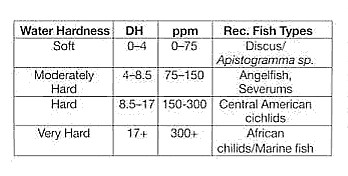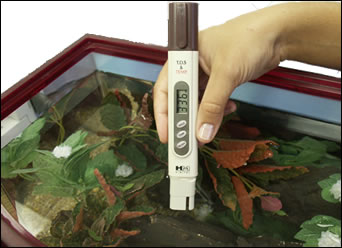|
Your first step to the right water.
|
AQUARIUMS & AQUACULTURE: Water and the health of your fish or reef
The ability of water to dissolve, combine with, or suspend other elements and compounds can be helpful as a supply of necessary nutrients. Water can also be a source of trouble for the aquarist because it can contain chemicals that are irritants or toxic to aquatic organisms. Aside from overall stress, water quality is the most common cause of fish diseases. ¹
A constant level of minerals in the water is necessary for aquatic life. Changes in the amounts of dissolved solids can be harmful because the density of total dissolved solids determines the flow of water in and out of an organism’s cells. Concentrations that are too high or too low may limit the growth and may lead to the death of many fish or reefs. ²
A level of 400ppm or less is recommended for most freshwater fish although many softwater fish demand a significantly lower level. Conversely, saltwater fish require a very high level of anywhere from 5000 to 50,000 ppm. Total Dissolved Solids are also important for proper osmotic regulation, which is the relationship of water versus dissolved solids in the cells and the external environment. The greater the amount of solids in the water versus the solids in the tissue of the fish will result in a fluid loss via the gills. ³
Authorities indicate that water of low ppm and pH control my be more desirable for breeding, though this depends on the species of fish. Since total dissolved solids content of a softened water is the same as that of the untreated raw water, a supply with a lower dissolved solids content must be gained in some other way. Blending of softened water with reverse osmosis or distilled water may produce the conditions conducive to aquatic breeding. 4
It is critical to regulate the alkalinity & buffering capacity (pH) of the water as well as the amount of Dissolved Oxygen (DO) present in your aquarium, tank or pond.
|

It's essential to know your fish and your water.
|

|
|
TDSMETER.CO.UK's TDS-4TM and DM-1 are perfect for aquarium owners and aquaculture. It's the ideal tool to measure the effectiveness of a water filter to ensure the water simulates a natural habitat as closely as possible, whether the water is for salt water or fresh water fish tanks, ponds or reef tanks. Click here to view our aquarium-specific packaging for the TDS-4TMA.
The DM-1 can be used with a reverse osmosis system or RO and distillation or other system combination to ensure tank water is pure prior to being treated. It is the best device available to gauge if your purification system is effective. Since it has two lines, the unit can work measuring tap (feed) water and purified water or by measuring the product water of a two-stage system (e.g., RO & DI).
SOURCES:
1. Fairfield, Terry. A Commonsense Guide to Fish Health. Barrons. 2000.
2. Lehigh Envirosci.
3. Fairfield
4. WQA: Is soft water safe for tropical fish?
Additional Sources:
Water Quality Considerations for Aquaculture aquanic.org
Looking to buy TDS meters for your aquariums? Find a distributor nearest you on our distributor list page.
|
 |
|




![]()